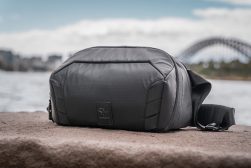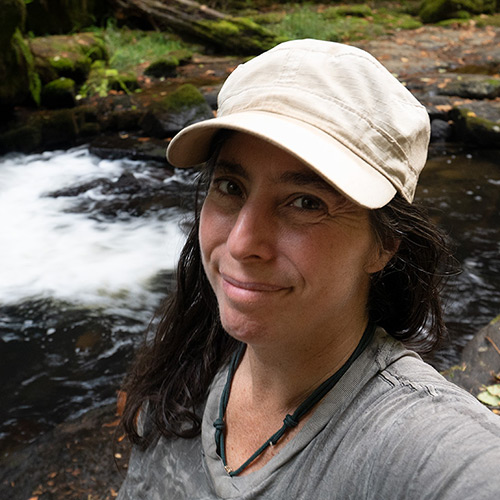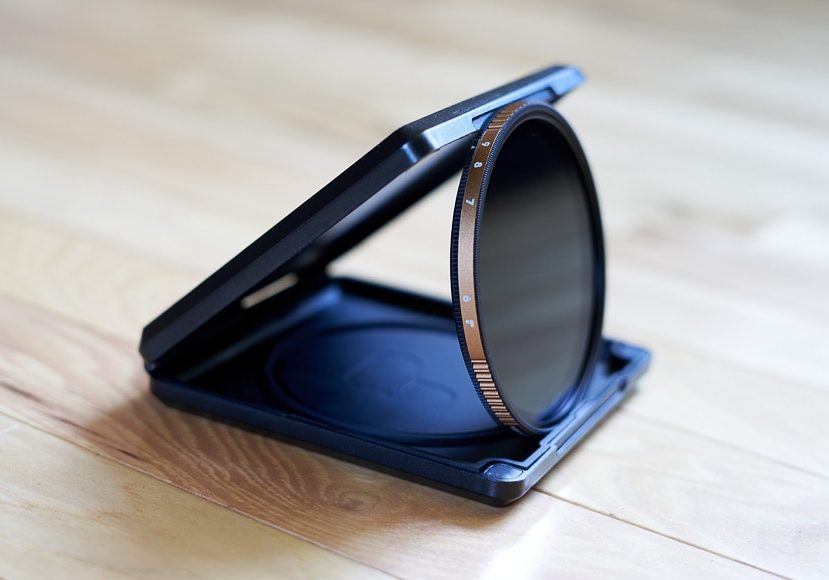
PolarPro Peter McKinnon ND Filter Review
Check out our honest review of the PolarPro Peter McKinnon Variable ND Filter, complete with photo samples. Is it worth the spend?!
Neutral-density (ND) filters can really open up a whole new world of photography, especially for landscape photographers. But not all neutral-density filters are created equal.
I recently had a chance to try out one of PolarPro’s Peter McKinnon Variable ND filters.
Since my previous experience had only been with mid-grade or even downright cheap filters, I was excited to see just how different working with a high-end filter could be.
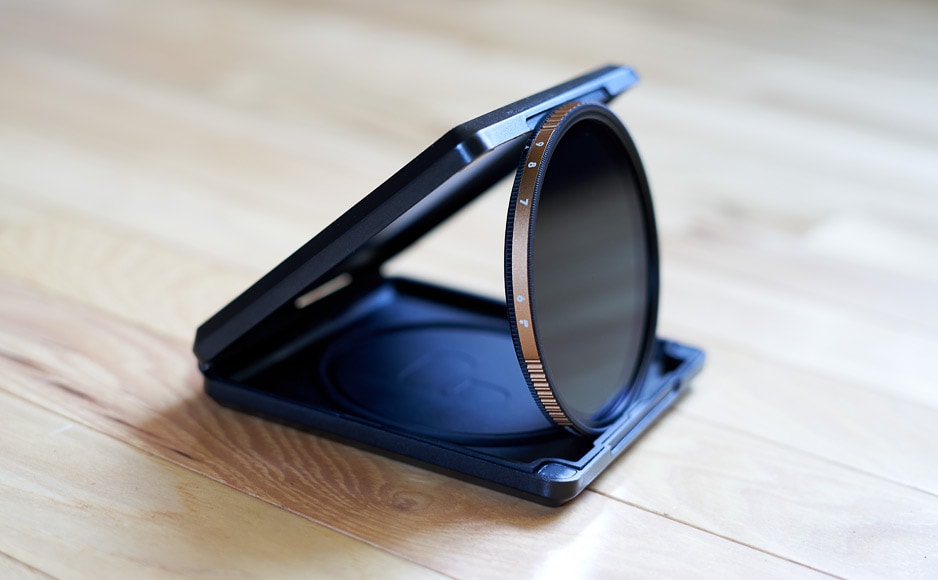
Durable, hight quality filter with a controlled stop range and fused quartz glass for superior optical clarity.
I was also excited to use it on my Sony a7 III, a huge step up from the last camera I used ND filters on – a Nikon D7000.
But let’s start with a brief introduction to neutral density filters before getting into the nitty-gritty of PolarPro’s 6-9 stop variable filter.
Table of Contents
PolarPro Peter McKinnon Variable ND Filter | Specs
- Exceptional build quality
- Excellent performance
- Surprisingly easy to use
- Lifetime warranty
- Price is a bit steep unless you’re a pro
- Occasional vignetting
Glass Filter Material: Fused Quartz
Filter Factor Range: ND64 to ND512
Optical Density Range: 1.8 to 2.7
Available Thread Size: 67mm | 77mm | 82mm
Frame Material: Aluminum
What’s included: VND Filter, DefenderSlim™ Filter Cover, Magnetic Hard Case, Soft Case, Microfiber Cloth.
The filter itself is made from fused quartz glass, which is supposed to have the best optical clarity over any glass on the market.
From there, PolarPro added 16 layers of anti-reflection coatings for scratch protection and to prevent ghosting and reflection. These coatings also make for efficient cleaning and help protect against water and oil.
It’s also supposed to have the lowest refractive index on the market.
Build Quality

The build quality of the Peter McKinnon Variable ND filter is impressive all the way around.
The first thing you’re going to notice when you get one of these is how much time and care PolarPro took with the packaging and presentation of the overall setup. Everything from the box to its contents reflects a lot of conscious thought.
The filter itself is no exception. The gold ring has the different stop values laser-etched into it. The ring feels quite solid and turns easily, while maintaining whatever settings you set it to. There’s no binding.
The coatings work too. From fingerprints to water droplets, the glass was superbly easy to clean. It’s hard to explain, but it felt much less fragile than the other filters I’ve worked with.
The aluminum alloy filter ring assembly feels durable yet lightweight.
All in all, the build quality is what you’d expect from a high-end product. No disappointments here.
Performance
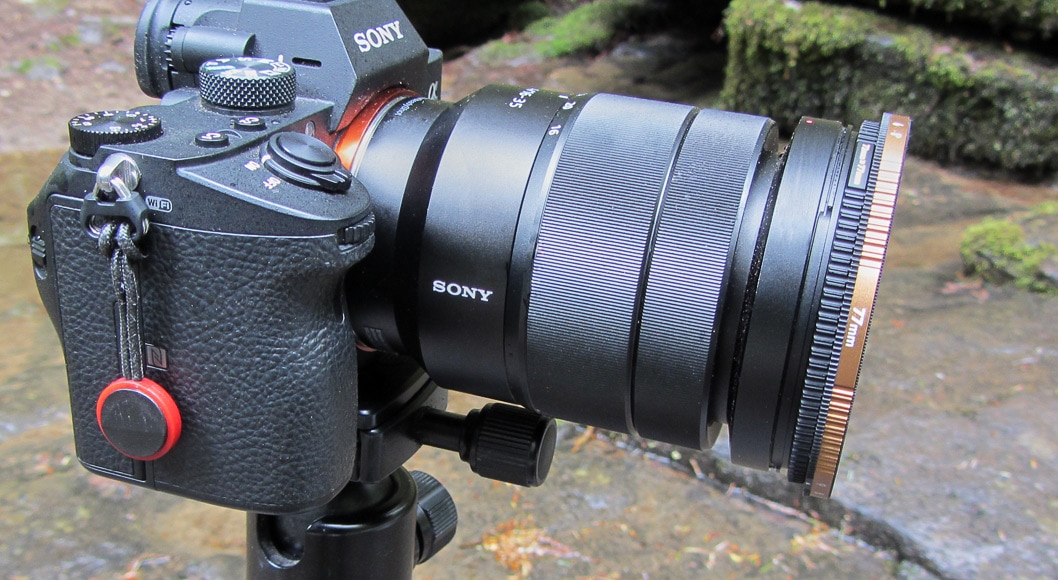
Since my Sony FE 16-35mm f/4 has 72 mm threads, I needed a step-up ring to use PolarPro filters, whose closest size is 77 mm.
You need some type of moving element – usually water or clouds for landscape photographers – to get the most out of a strong ND filter. Given that going to the coast is a bit discouraged during these days of COVID-19, I settled for a nearby creek.
Shooting with screw-on ND filters can be a bit of a juggling act, especially if you tend to keep a polarizer filter on your lens (as I do).
Add to this the fact that I’m usually in places where there’s running water – sometimes even in the water – and it can get a bit dicey.
That’s why I was absolutely delighted with how easy the Peter McKinnon ND filter was to use. Part of this was due to the fact that I’m now using a mirrorless camera and I can focus with the filter in place.
With my Nikon D7000 I’d have to first set up the scene, lock focus in AP mode, then screw on the filter, switch to manual mode, and then count 30 or so shutter speed steps.
With my Sony a7 III, it focused right through the 9-step filter every time. I didn’t have to calculate the stop differential – what a dream!
There was a bit of an extra step in that I had to use a step-up ring to get the filter to fit my lens, though. (This also came from PolarPro.) Luckily the case this came in fit my polarizer perfectly, so I didn’t have to have yet another thing to keep out of the elements.
So here’s how the juggling act goes:
- Remove the polarizer and somehow exchange places with the step-up ring in the case (luckily the step-up ring doesn’t have any glass that needs protecting)
- Find a place to set the polarizer case
- Screw the step-up ring on
- Attach the ND filter using the “DefenderSlim” filter cover that comes with it, which is awesome. Not only does it make it so you don’t risk touching the glass and getting fingerprints on it, it makes it much easier to screw on.
- Find a safe place to set the (now empty) ND case
The only real problem I had with installation was the fact that it was ridiculously easy to over tighten things. Even at my gentlest I had issues getting the step-up ring off my lens and, more frequently, getting the ND filter to detach from the step-up ring.
In both cases the threads are super slim (the wider, gold rotating part is not the part that needs to detach). It’s going to definitely take some practice to develop the right touch.
As far as image performance is concerned, I had no problems with color casting. Occasionally auto white balance on my camera seemed to get confused as I moved through the stops, but that was about it.
With vignetting, it was a bit different. PolarPro claims that the Peter McKinnon ND filter has zero vignetting down to 16mm focal length lenses, but I noticed vignetting at times. Sometimes stronger, sometimes barely noticeable.
It’s hard to tell with images this size, but in the series below there is some vignetting at the 7-stop and 8-stop settings, as well as a bit on the 9-stop as well. The 6-stop setting didn’t seem to have that problem at any point.
The images below are all RAW images as rendered by Capture One. No adjustments have been made.
I did learn, however, that sometimes I need to bump up the exposure a bit more than my camera called for in its meter. Here you can see that my camera’s meter was a bit off on the 7-stop image and needed a longer shutter speed.
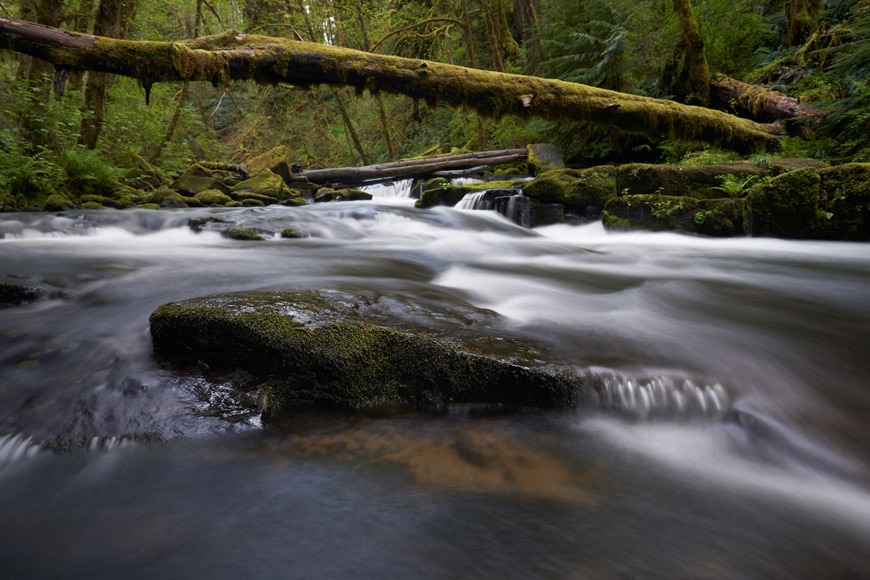
At 6 stops. | Sony a7 III + Sony FE 16-35mm f/4 | 5s | f/8 | 23 mm | ISO 100
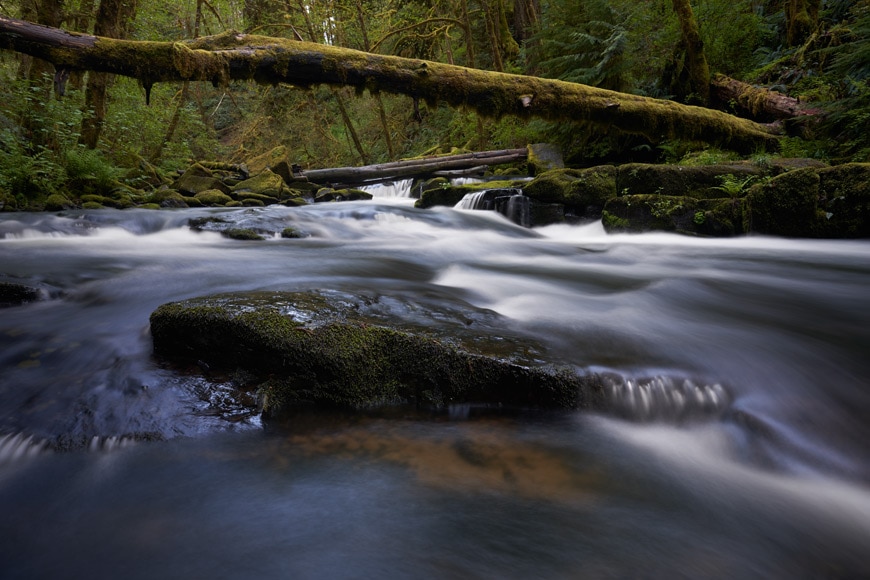
At 7 stops. Sony a7 III + Sony FE 16-35mm f/4 | 6s | f/8 | 23 mm | ISO 100
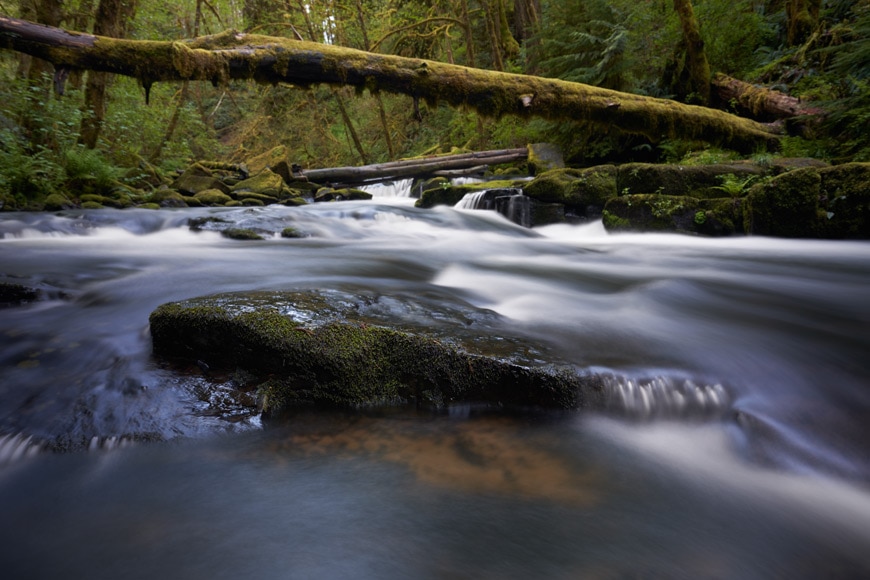
At 8-stops. | Sony a7 III + Sony FE 16-35mm f/4 | 13s | f/8 | 23 mm | ISO 100
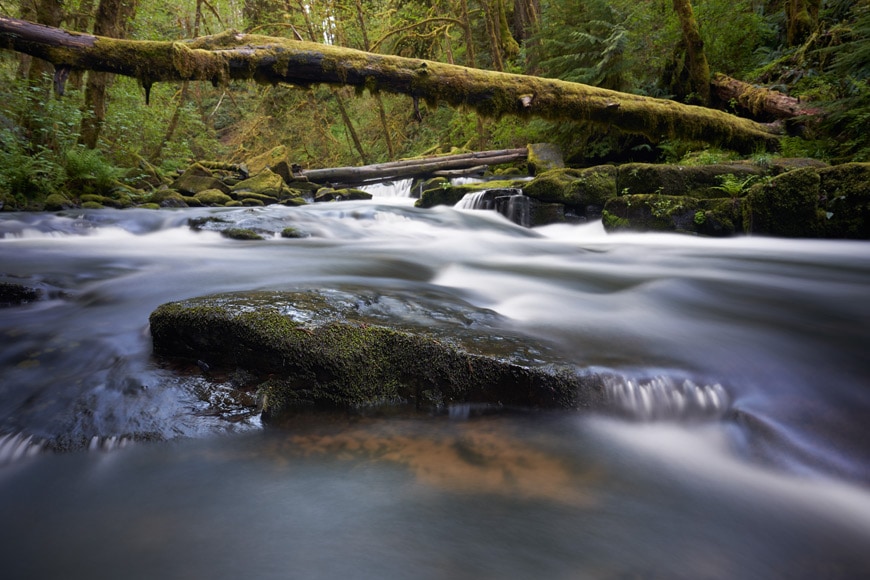
At 9 stops. Sony a7 III + Sony FE 16-35mm f/4 | 25s | f/8 | 23 mm | ISO 100
Clarity and color are both excellent (for unedited RAW photos). I’m a little disappointed with the softness of the background. At f/8 I would have expected it to be a bit sharper. Still, this should be easily fixed by stopping down.
Close up, though, the sharpness is fine. Here’s the level of detail on the rock with the ND filter set at 9 stops:
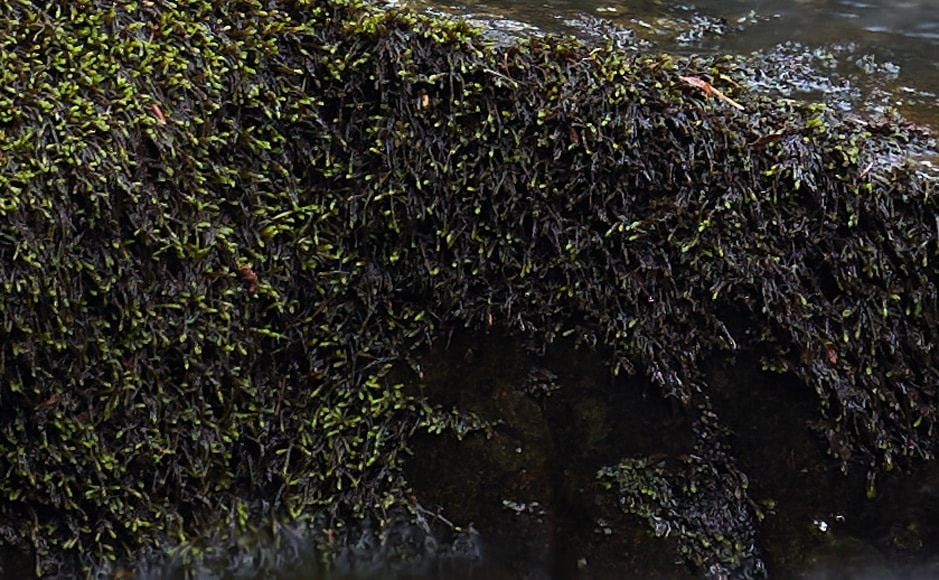
Blown up to 100%, you can see that there’s next to no loss of detail using the 9-stop setting. Again, this is a RAW photo with no sharpening applied.
Never having used a variable ND filter before, I was surprised to find that there wasn’t a lot of difference in the texture of the water between the different shutter speeds.
Here’s an example of heavier vignetting:
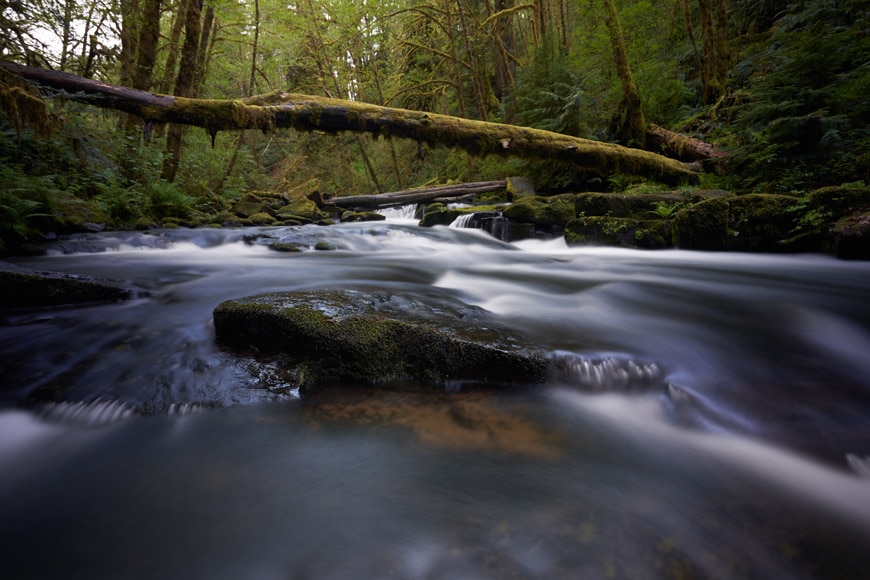
Much heavier vignetting on this shot – mostly on the sides. | Sony a7 III + Sony FE 16-35mm f/4 | 15s | f/8 | 18 mm | ISO 100
Still, even with the occasional vignetting I found the quality of the images to be excellent, especially when compared with other filters I’ve used. There was certainly no cross-polarization or color casting.
Two things I wish were different – and can’t be helped – is that my 72mm lens cap doesn’t fit on the filter nor does the lens hood when the filter is on. I always protect my lens when moving about, and I move about often. It’s a bit harrowing changing positions on a riverbank without a lens cap on.
Other than this, I really love using the PolarPro ND filter.
What’s in the Box
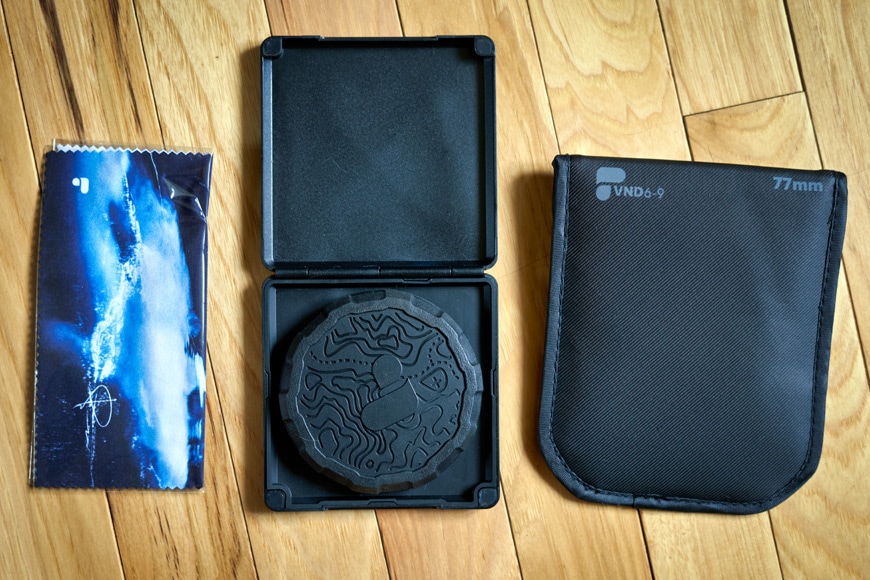
As mentioned before, PolarPro put a lot of attention to every detail, not just in the filter itself but also in the packaging and the accessories that come with it.
The DefenderSlim cover (center above) works quite well, both for fingerprint-free installation and as filter protection.
The hard case is beautifully made, with a brushed-metal outer top and bottom. The magnetic closing mechanism feels nice and secure. The filter + cover fits snugly inside; I wouldn’t have minded a millimeter or so of additional space on the inside.
The soft case is a bit tall for my camera kits and I prefer hard cases in general, but there were definitely times I wished I had the soft case with me.
I can take or leave the custom printing on the microfiber cloth, but many think it’s a nice touch.
More importantly, however, the PolarPro Peter McKinnon Variable ND filter comes with what PolarPro calls Adventure Assurance, which is essentially a limited lifetime warranty.
Considering the priciness of this little guy, a lifetime warranty definitely sweetens the pot.
Value for Money
Just like other filters, ND filters can run the gamut in price. There are some as low as $10 and others, like this one, are top of the line.
Having shot on less expensive filters (ICE and B&W), I can definitely say you get what you pay for in this case.
At just under US$300, the PolarPro Peter McKinnon VND filter is going to seem rather expensive.
At the same time, if you wanted the same versatility from individual filters of the same quality, you’d spend quite a bit more. (And have more to carry!)
Also, with fewer filter changes you’re less likely to drop something or make some other mistake. Another benefit is that dealing with rapidly changing light situations is a breeze with a VND. For example, you won’t have to make filter changes as the sun sets.
Put together with the exceptional build quality, excellent performance, and lifetime warranty, it’s well worth the investment if ND filters are important to your photography style.
PolarPro Peter McKinnon ND Filter Review | Conclusion
I’ll be honest. I totally fell in love with this Peter McKinnon Variable ND filter the moment I started using it. Much like we found in our McKinnon camera pack review, it’s priced at a premium, but with good reason.
There’s just no comparison between it and the other ND filters I’d been using. The quality is just stellar, with the post-processing afterwards a breeze.
While it’s true that I’m not a big fan of using them on rivers like in the example above, I love love love using them on seascapes and flowing clouds and will definitely be carrying this one as part of my kit from now on.

Durable, hight quality filter with a controlled stop range and fused quartz glass for superior optical clarity.
Teryani Riggs (they/them) is an adventure, who loves all things wild and free. Teryani can often be found in the midst of a social/eco-justice campaign, hiking through wild backcountry, or hitchhiking around the world listening to other people’s stories. While their focus has historically centered on landscape, travel, and wilderness photography, they’ve also been hired to shoot genres as varied as historical fiction reenactments in the studio to product and food photography.








